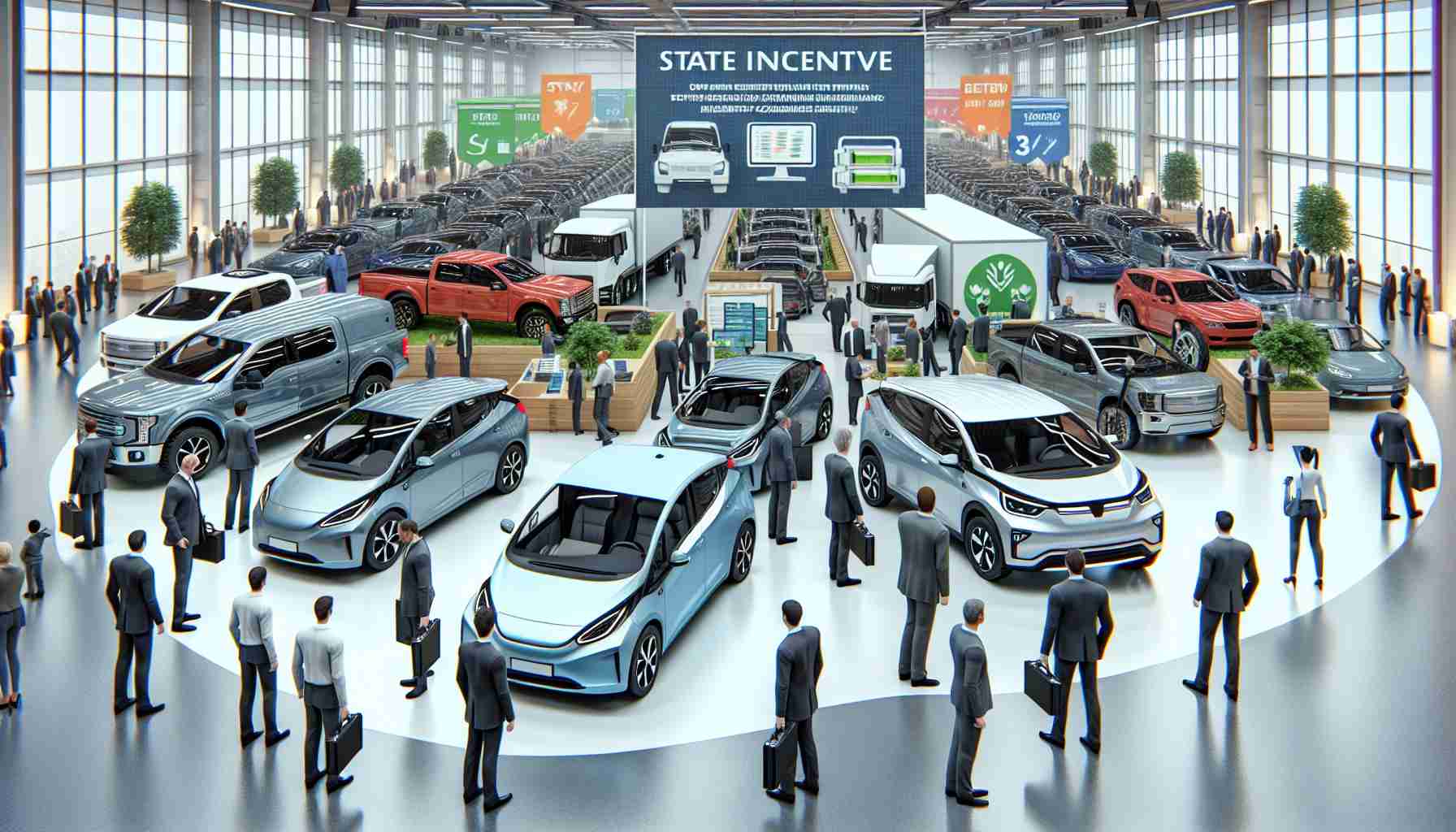A Game-Changer for Commercial Electric Vehicles
A breakthrough in the commercial electric vehicle market has been realized with the introduction of state incentives for eco-friendly transportation options. Electric trucks like the innovative Bollinger B4 are now more affordable and accessible, thanks to substantial rebates and tax credits available in California.
California Setting the Tone for Sustainable Transport
The state of California has taken a proactive stance in fostering a market for commercial electric vehicles, paving the way for a more sustainable future in transportation. With generous incentives offered through programs like the Hybrid and Zero-Emission Truck and Bus Voucher Incentive Project (HVIP), customers can now enjoy significant cost reductions when purchasing electric trucks.
Introducing the Bollinger B4: A Game-Changer in Commercial Trucking
The Bollinger B4 Chassis Cab is leading the charge in revolutionizing the commercial trucking industry with its all-electric design and impressive capabilities. Boasting a remarkable range of 185 miles and a substantial payload capacity of 7,394 lbs, the Bollinger B4 is a versatile and efficient choice for commercial fleets looking to invest in sustainable transportation solutions.
Achievements and Milestones
Bollinger Motors continues to make significant strides in the electric vehicle sector, with key milestones including production launches, regulatory compliance achievements, and strategic partnerships with industry leaders. The company’s commitment to innovation and sustainability is evident in its continuous efforts to expand its market presence and deliver cutting-edge solutions to customers.
About Bollinger Motors
Founded with a vision to revolutionize the commercial electric vehicle market, Bollinger Motors is dedicated to developing top-of-the-line, all-electric trucks that prioritize performance, safety, and sustainability. With a strong focus on customer satisfaction and technological advancements, Bollinger Motors is shaping the future of transportation one electric vehicle at a time.
Unlocking New Opportunities in the Commercial Electric Vehicle Market
As the commercial electric vehicle market continues to evolve, various states across the U.S. are implementing their own unique incentives to drive the adoption of eco-friendly transportation solutions. While California has been at the forefront of this movement, other states are now joining the cause, offering additional benefits and support to businesses looking to invest in electric trucks and buses.
What are the Key Questions Surrounding State Incentives for Commercial Electric Vehicles?
1. Which states besides California are offering significant incentives for commercial electric vehicles?
Several states, such as New York, New Jersey, and Colorado, have introduced programs that provide rebates, grants, and tax credits to encourage the transition to electric fleets.
2. What are the eligibility criteria for businesses to qualify for state incentives?
Each state program may have specific requirements related to vehicle types, fleet sizes, and operational parameters that companies must meet to take advantage of the incentives.
Challenges and Controversies
One of the key challenges associated with state incentives for commercial electric vehicles is the potential disparity in benefits across states. This can create uneven market conditions and competition among businesses operating in different regions. Additionally, there may be controversies regarding the long-term sustainability of incentive programs and their impact on state budgets.
Advantages and Disadvantages of State Incentives
Advantages:
– **Cost Reduction**: State incentives can significantly lower the upfront costs of purchasing electric vehicles, making them more financially feasible for businesses.
– **Environmental Impact**: Promoting the adoption of electric trucks and buses helps reduce greenhouse gas emissions and contributes to a cleaner environment.
– **Economic Growth**: By supporting the development of the electric vehicle industry, state incentives can stimulate economic growth and create new job opportunities.
Disadvantages:
– **Budget Constraints**: Sustaining incentive programs over time may strain state budgets and lead to reevaluation or cuts in funding.
– **Market Distortions**: Incentives could distort market dynamics by favoring certain companies or vehicle manufacturers, potentially inhibiting fair competition.
– **Dependency Issues**: Businesses relying heavily on incentives may face challenges transitioning to electric vehicles without continued government support.
To stay updated on the latest developments and incentives in the commercial electric vehicle market, visit the Energy Department website for comprehensive information on state initiatives and sustainable transportation programs.
 Revolutionizing Commercial Electric Vehicle Market with State Incentives
Revolutionizing Commercial Electric Vehicle Market with State Incentives  Revolutionary Incentives for Electric Trucks in California
Revolutionary Incentives for Electric Trucks in California  Redefining Electric Boating: A New Frontier in Pontoon Innovation
Redefining Electric Boating: A New Frontier in Pontoon Innovation  Revolutionizing Transportation through Aerial Innovation
Revolutionizing Transportation through Aerial Innovation  Wisconsin Introduces New Regulations for Electric Vehicle Owners
Wisconsin Introduces New Regulations for Electric Vehicle Owners  Electric Vehicle Charging Stations: A Catalyst for Retail Success
Electric Vehicle Charging Stations: A Catalyst for Retail Success  Electric Plug Technology Enhances Safety for First Responders
Electric Plug Technology Enhances Safety for First Responders  Enhancing Safety Measures for EV Charging Stations
Enhancing Safety Measures for EV Charging Stations  Introducing the 2026 Mercedes-Benz CLA-Class Hybrid
Introducing the 2026 Mercedes-Benz CLA-Class Hybrid 